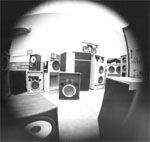I have had MRV-308s for a quite long a time, and they sound nice&soft. They are nice also while listening long periods with moderate levels. Have you listened to L890, I have had no possibility yet, because they have just arrived in Europe... and the dealers are not eager to take it in their small listening rooms...
Markku



 Reply With Quote
Reply With Quote Check it out.
Check it out.


